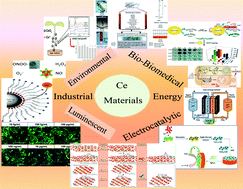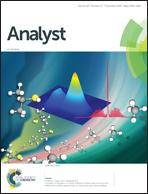Synthesis, design and sensing applications of nanostructured ceria-based materials
Abstract
Cerium-based materials possess redox properties due to the presence of dual valence states of Ce3+ and Ce4+. In the last few years, the scientific community has paid much attention to designing and synthesizing cerium-based materials through advantageous routes for widespread catalytic and sensing applications in many fields. Cerium materials have been synthesized in many different forms, shapes and sizes. The catalytic and sensing capabilities of cerium nanostructures are highly dependent on their morphologies and can be improved significantly by modifying the sizes and shapes of the nanostructures to develop sensing scaffolds with improved sensing performance. These nanostructures provide a basis for applications in many fields. From a literature survey (2010 to 2015), it can be concluded that the fundamental morphologies, ratios, and capping of cerium nanostructures (CeNSs) constructively affect their properties and applications. Designed sensors utilizing CeNSs exhibit outstanding stability, high selectivity and eminent reproducibility in relation to time and temperature. This review will provide a perspective insight on the future trends in the design of different morphologies of CeNSs and their promising applications.

- This article is part of the themed collection: Recent Review Articles


 Please wait while we load your content...
Please wait while we load your content...